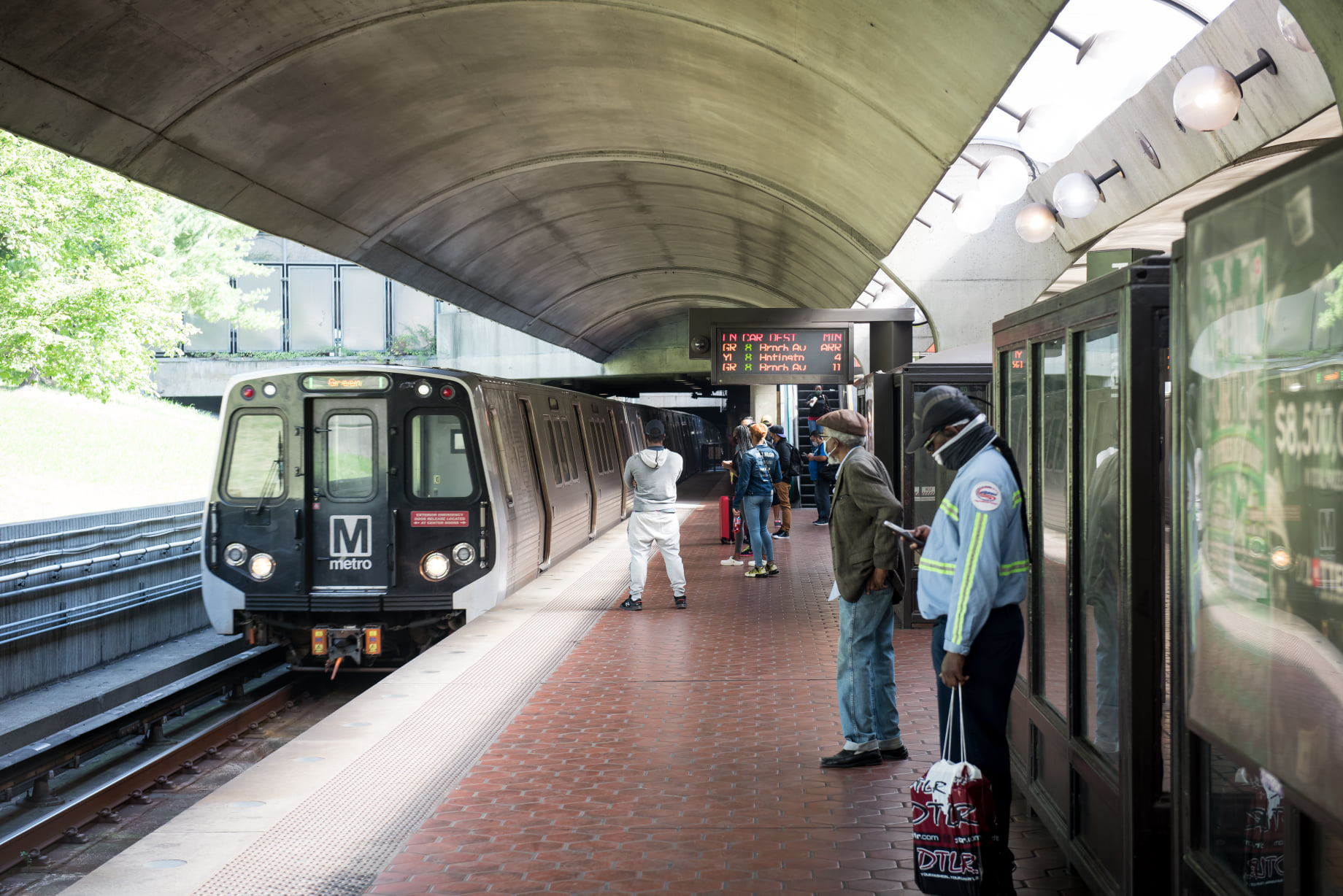
WASHINGTON — The Washington Metropolitan Area Transit Authority has released a budget for the fiscal year beginning in July 2024 that calls for drastic cuts to rail and bus service unless money can be found to address an operating deficit of $750 million — roughly 25% of the current budget.
The proposed budget will include closure of 10 stations on the Metrorail network, longer intervals between trains, a 10 p.m. closing time across the system (as opposed to the current midnight, or 1 a.m. on Friday and Saturday nights), and 20% increases in fares and parking fees. Service on the Red and Silver lines would be trimmed through “turnbacks,” where some trains would cover the entire route, while some would end their run at intermediate stations. The Metrobus system would see elimination of 67 of 135 lines, and service reductions on 41 others. More than 2,200 jobs would be cut.
Some preventative maintenance funds would also be shifted to the operating budget; the Washington Post reports officials said this could lead to problems with escalators, signals on the rail system, and vehicle performance.
“This is a budget we don’t want to deliver,” Metro General Manager Randy Clarke said, according to the Post. “This budget proposal would be customers paying more for much less-quality service.”
WMATA does not have a dedicated source of funding, relying on contributions from the District of Columbia, Maryland, and Virginia to supplement fare revenue and federal money. The website DCist reports the agency is seeking an additional $665 million from the three regional funding sources.
Amalgamated Transit Union Local 689, which represents WMATA workers, said in a statement that it was “shocked and dismayed by the stunning and draconian proposed cuts” released in advance of Thursday’s WMATA board meeting.
“This proposed budget should serve as a wake-up call,” the union’s statement reads. “Without a reliable and robust dedicated funding source, our system faces a bleak future. We need Maryland, Virginia, and Washington, D.C., as well as Congress, to do their part to secure that dedicated funding.”
While the WMATA board will discuss the budget proposal on Thursday, a final budget is not due until April.














I think that if they stopped paying the consultants for projects that are not needed and stop the usual government waste that accompanies these public transit lines, they could more than cover their shortfall.
I know several Federal Employees who are still working at home. Is the Federal Government still allowing the bulk of its employees to work at home?
Or, not working while at home. We can get rid of Biden fast enough.
No comments so far? What’s to say? It’s not pleasant to comment on a catastrophe, which is exactly what this is.
Folks, be very very very concerned. The economics of public transportation are collapsing in front of us.
Rail transit, light rail, commuter rail, and intercity rail are covering a smaller fraction of daily O+M, while capital costs (entirely subsidized) are skyrocketing. This is why local transit is completely dependent on federal funding. States and localities can’t cover these costs. The federal budget can cover the costs, because the federals print money, almost to the point of borrowing money to cover the interest payments on borrowed money.
Read about these massive WMATA cuts. What does it remind you of? It sounds just like intercity passenger trains in the 1960’s. In transportation you can’t cut your way to prosperity. When you start cutting, you’re on your way to further cuts, followed by further cuts.
It’s my understanding DC has one of the lowest percentages of returning riders after the pandemic. Does anybody know what the comparative percentages are and by how much WMATA ridership has declined?
Of course the reduced service because of the wheel problems didn’t help.